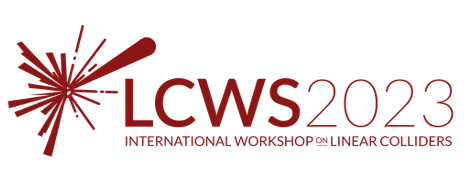Speaker
Description
A muon collider presents an exciting and affordable medium-term possibility for a TeV-scale collider to explore the energy frontier, enabling a physics program would be extremely complementary to precision e+/e- Higgs factories. While detectors at a muon collider would face unique challenges due to the extreme backgrounds arising from beam decays in-flight, there are many complementary directions of detector development that could serve both e+/e- and muon collider communities. This talk highlights several areas where collaborative R&D could benefit both communities in the areas of timing detectors, high-granularity calorimetry, and magnet developments. These synergies can help maximize the physics impact of ongoing detector development projects.



